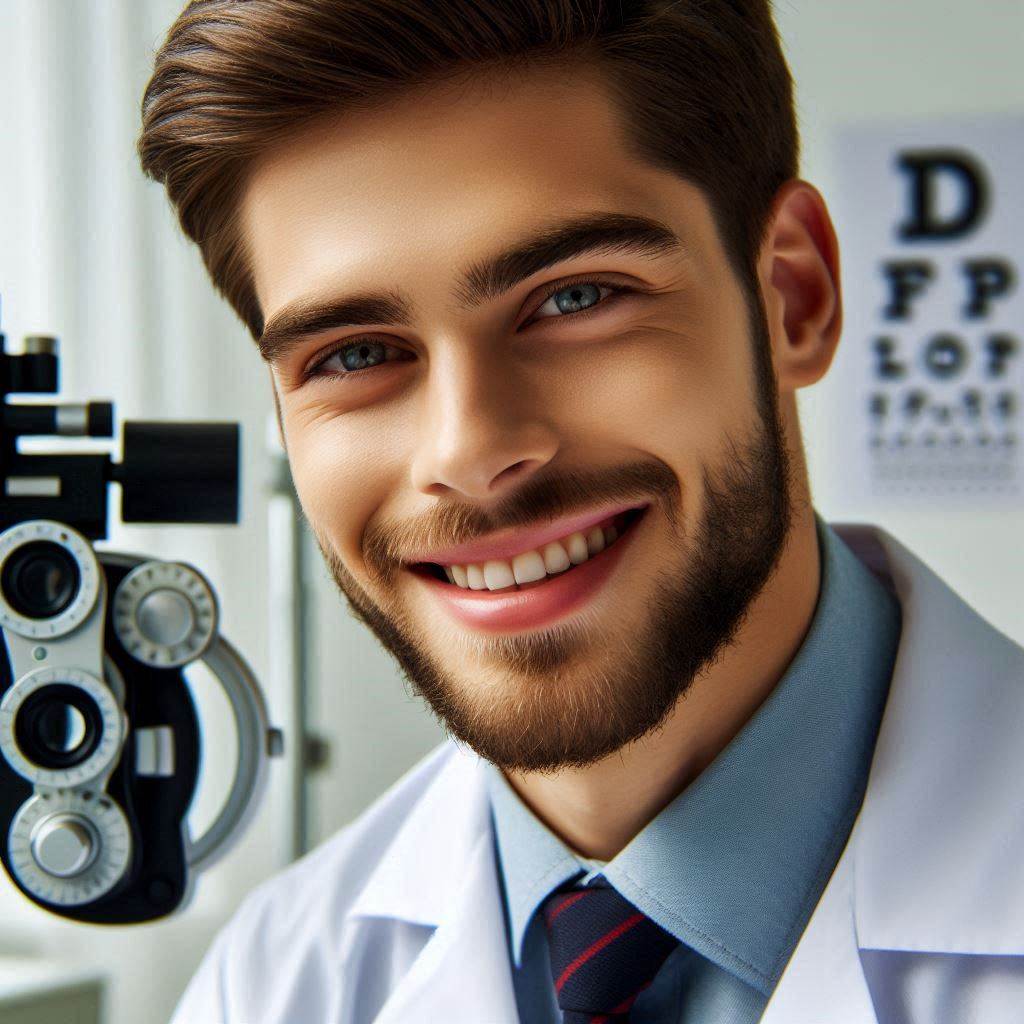Introduction
In this blog post, we will explore Aging Populations Optometrists and Eye Care.
As individuals age, the importance of eye care becomes increasingly vital due to various age-related vision problems.
Optometrists play a crucial role in diagnosing and treating these issues, ensuring optimal eye health for aging populations.
Aging brings about changes in vision, such as presbyopia, cataracts, glaucoma, and macular degeneration, which can significantly impact quality of life.
Regular eye examinations and proper treatment are essential to address these conditions and maintain overall well-being.
According to the National Eye Institute, approximately one in three older adults has some form of vision-reducing eye disease.
The prevalence of age-related eye conditions underscores the necessity of proactive eye care for this demographic.
This blog post aims to emphasize the critical role that optometrists play in preserving and enhancing the vision of older adults.
By raising awareness about the importance of specialized eye care for aging populations, we hope to underscore the value of regular eye check-ups and prompt treatment.
Challenges Faced by Aging Populations
Common challenges Faced by Aging Populations
As individuals age, they often experience a decline in their vision and may face a variety of eyesight-related issues.
This can range from simply needing reading glasses to more serious conditions that require medical intervention.
One of the most common challenges faced by aging populations is the increased risk of developing eye diseases such as cataracts, glaucoma, and macular degeneration.
These conditions can significantly impact a person’s quality of life and may even lead to blindness if left untreated.
Furthermore, the process of aging itself can have a negative impact on overall eye health.
As we get older, the tissues in our eyes become less flexible, making it harder for them to focus properly.
This can result in difficulties with reading, driving, and other daily activities that require good vision.
Preventive Measures and Solutions
Despite these challenges, there are several preventive measures and solutions that can help aging populations maintain good eye health.
Regular eye exams are crucial for early detection of any issues and can help prevent more serious conditions from developing.
It is also important for older adults to maintain a healthy lifestyle, including eating a balanced diet rich in fruits and vegetables, exercising regularly, and avoiding smoking.
These habits can help reduce the risk of eye diseases and promote overall well-being.
Transform Your Career Today
Unlock a personalized career strategy that drives real results. Get tailored advice and a roadmap designed just for you.
Start NowFor individuals who already have existing eye conditions, there are various treatment options available depending on the specific issue.
This may include medications, laser surgery, or other interventions to improve vision and manage symptoms.
Importance of Proper Eye Care
Proper eye care is essential for aging populations to ensure that they can continue to see clearly and maintain their independence as they grow older.
Good vision is key to staying active, socializing, and enjoying a high quality of life.
By taking proactive steps to address any eye health concerns and seeking regular care from an optometrist, older adults can significantly improve their chances of preserving their vision and preventing serious eye conditions.
It’s never too late to prioritize eye health and make it a priority in overall wellness.
Read: Insurance and Optometry: What Patients Need to Know
Role of Optometrists in Eye Care for Aging Populations
Optometrists play a crucial role in providing eye care for aging populations.
They are specialized healthcare professionals who are trained to examine, diagnose, and treat a wide range of eye conditions and diseases.
Below are some key responsibilities optometrists have when caring for aging patients:
Comprehensive eye exams to detect and diagnose eye conditions
Optometrists perform thorough eye examinations to assess the overall health of the eyes and detect any underlying conditions that may be affecting vision.
By conducting various tests, such as visual acuity tests, eye pressure measurements, and retinal examinations, optometrists can identify issues early on and provide appropriate treatment.
Prescription of corrective lenses or vision aids
One of the main responsibilities of optometrists is to prescribe eyeglasses or contact lenses to correct vision problems such as nearsightedness, farsightedness, and astigmatism.
For aging populations, optometrists may also recommend specialized lenses for conditions like presbyopia, which commonly affects individuals over the age of 40.
Monitoring and management of eye diseases
Optometrists are trained to diagnose and manage various eye diseases, including glaucoma, cataracts, macular degeneration, and diabetic retinopathy.
They work closely with patients to monitor their condition, provide necessary treatment, and make referrals to ophthalmologists or other specialists as needed.
Referrals to other specialists if needed
In some cases, optometrists may identify eye conditions that require specialized treatment beyond their scope of practice.
They collaborate with ophthalmologists, neurologists, and other healthcare professionals to ensure that aging patients receive comprehensive care for their eye health.
Overall, optometrists play a vital role in promoting eye health and vision quality for aging populations.
Through regular eye exams, timely interventions, and coordinated care with other specialists, optometrists help elderly individuals maintain good vision and quality of life as they age.
Read: Technology in Optometry: Innovations Enhancing Care
Importance of Regular Eye Exams for Older Adults
As we age, our eyes go through various changes that can impact our vision and overall eye health.
It is important for older adults to schedule regular eye exams with an optometrist to ensure early detection and treatment of any eye conditions.
Regular eye exams play a crucial role in preventing vision loss and complications, as well as monitoring any changes in vision and eye health over time.
Importance of Regular Eye Exams for Older Adults
- Early detection and treatment of eye conditions
- Prevention of vision loss and complications
- Monitoring changes in vision and eye health over time
Regular eye exams can help identify common age-related eye conditions such as presbyopia, cataracts, glaucoma, and age-related macular degeneration.
Early detection of these conditions can lead to timely intervention and treatment to prevent further deterioration of vision.
Prevention of vision loss and complications
- Regular eye exams can help prevent vision loss by detecting issues early on
- Early treatment of eye conditions can reduce the risk of developing complications
- Proper management of conditions such as glaucoma can prevent irreversible vision loss
By monitoring changes in vision and eye health over time, optometrists can detect subtle changes that may indicate the progression of certain eye conditions.
This allows for timely adjustments to treatment plans and interventions to maintain good eye health in older adults.
Monitoring changes in vision and eye health over time
- Regular eye exams help track changes in vision acuity and clarity
- Optometrists can identify signs of conditions like diabetic retinopathy through regular screenings
- Monitoring eye health can help identify any underlying health issues that may affect vision
Overall, regular eye exams are essential for older adults to maintain good eye health and prevent vision-related complications.
By staying proactive about their eye care, older adults can enjoy better vision and quality of life as they age.
Read: The Role of Optometrists in Managing Chronic Eye Conditions

Common Eye Care Tips for Aging Populations
When it comes to eye care for aging populations, there are several important factors to consider in order to maintain good eye health and prevent vision problems.
In this section, we will discuss some common eye care tips for seniors to help them maintain optimal vision as they age.
Proper Nutrition for Eye Health
One of the most important things aging individuals can do to protect their vision is to eat a healthy, balanced diet rich in antioxidants, vitamins, and minerals.
Foods like leafy greens, fish, nuts, and citrus fruits are particularly beneficial for eye health.
Eye Safety Measures to Prevent Accidents and Injuries
As individuals age, the risk of accidents and injuries that can affect their vision increases.
It is essential for seniors to take precautions to protect their eyes, such as wearing protective eyewear when doing tasks that could be hazardous to their eyes, like gardening or DIY projects.
Regular Exercise to Improve Overall Health and Circulation
Exercise is not only beneficial for overall health but can also help improve circulation to the eyes.
Engaging in regular physical activity can help reduce the risk of eye diseases like glaucoma and age-related macular degeneration.
Avoiding Smoking and Excessive UV Exposure
Smoking has been linked to an increased risk of several eye conditions, including cataracts and age-related macular degeneration.
It is crucial for seniors to quit smoking to protect their vision.
Additionally, protecting the eyes from excessive UV exposure by wearing sunglasses can help prevent cataracts and other UV-related eye problems.
By following these tips and incorporating them into their daily routine, aging populations can help maintain good eye health and reduce the risk of vision problems as they age.
It is essential for seniors to prioritize their eye care and take proactive steps to protect their vision for years to come.
Read: Exploring Specializations within the Optometry Field
Gain More Insights: Challenges Faced by Recreational Therapists
Technological Advancements in Eye Care for Older Adults
Advancements in technology have revolutionized the way eye care is provided to older adults.
These technological innovations have made it easier for optometrists to diagnose, monitor, and treat eye conditions in aging populations.
Telemedicine options for virtual eye exams and consultations
Telemedicine has become increasingly popular in recent years, allowing patients to receive eye care from the comfort of their own homes.
This is especially beneficial for older adults who may have difficulty traveling to a traditional eye care provider.
Through telemedicine, optometrists can conduct virtual eye exams and consultations, allowing them to assess the patient’s vision, check for any signs of eye diseases, and provide recommendations for treatment.
This remote approach to eye care not only saves time and money for older adults but also ensures that they receive the care they need without having to leave their homes.
Advanced imaging techniques for diagnosing and monitoring eye diseases
Technological advancements have also led to the development of advanced imaging techniques that make it easier for optometrists to diagnose and monitor eye diseases in older adults.
These imaging tools, such as optical coherence tomography (OCT) and fundus photography, allow optometrists to obtain detailed images of the eye’s internal structures, helping them identify any abnormalities or changes that may indicate the presence of a disease.
By utilizing these imaging techniques, optometrists can detect eye conditions such as macular degeneration, glaucoma, and diabetic retinopathy at an early stage, allowing for prompt intervention and treatment.
This not only helps preserve the vision of older adults but also improves their overall quality of life.
Digital tools for tracking vision changes and adherence to treatment plans
In addition to advanced imaging techniques, digital tools play a crucial role in helping older adults track their vision changes and adhere to treatment plans.
These tools, such as smartphone apps and wearable devices, allow patients to monitor their vision at home and communicate with their optometrists easily.
Digital tools can help older adults keep track of their appointments, medication schedules, and vision changes, enabling them to stay on top of their eye care regimen.
By ensuring that older adults adhere to their treatment plans, optometrists can help prevent the progression of eye diseases and preserve their vision for a longer period.
Overall, technological advancements have significantly improved the way eye care is provided to older adults.
These innovations not only make eye care more accessible and convenient but also enhance the accuracy and effectiveness of diagnosis and treatment.
By embracing these technological advancements, optometrists can better serve aging populations and ensure that they maintain healthy vision as they age.
Support Services and Resources for Aging Populations
When it comes to supporting the eye care needs of aging populations, there are a variety of services and resources available to help ensure that seniors maintain healthy vision and quality of life.
Low vision aids and devices to assist with daily activities
As we age, our eyesight may deteriorate, making it challenging to perform everyday tasks.
Low vision aids such as magnifiers, reading glasses, and specialized lighting can help seniors with visual impairments continue to engage in activities they enjoy.
Community programs and support groups for seniors with visual impairments
Joining a community program or support group can provide aging individuals with a sense of belonging and connection, as well as valuable resources for coping with their visual impairment.
These programs often offer educational workshops, social activities, and emotional support from peers facing similar challenges.
Access to financial assistance for eye care services and treatments
For many seniors, the cost of eye care services and treatments can be prohibitive.
Fortunately, there are resources available to help offset these expenses, such as Medicare coverage for certain eye-related procedures, financial assistance programs for low-income individuals, and discounts offered by some optometrists for seniors.
Ultimately, by taking advantage of these support services and resources, aging populations can proactively manage their eye care needs and enjoy a higher quality of life as they grow older.
Delve into the Subject: Home Health Aide: Navigating Difficult Conversations
Conclusion
Optometrists play a crucial role in providing eye care for aging populations.
Regular eye exams are essential for maintaining good vision as we age.
It is important for older adults to prioritize their eye health by scheduling routine check-ups with their optometrist.
We must encourage our loved ones to take care of their eyes and educate them about the significance of eye care in older age.
By sharing this information, we can promote awareness and help individuals understand the importance of regular eye examinations in maintaining good vision and overall health.
Let’s all do our part in ensuring the eye health of our aging population.




